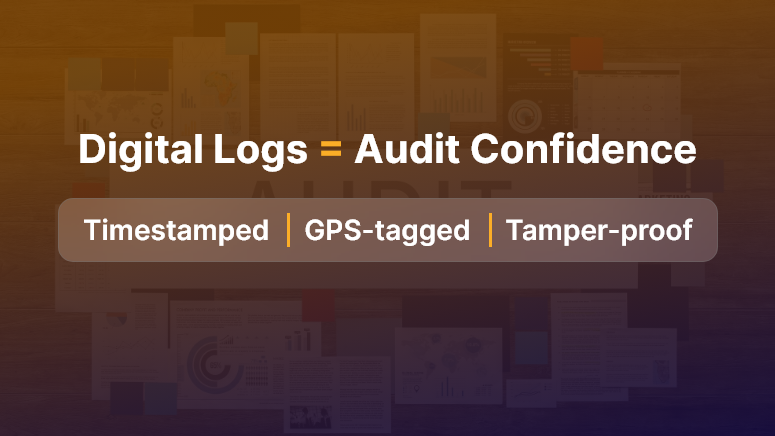Did you know that 65% of construction firms fail audits because they lack proper documentation? When regulations tighten, staying audit-ready matters more than ever. That’s where digital logs compliance comes in: structured, timestamped records captured automatically.
With clear logs, teams avoid disputes, speed inspections, and prove compliance in real time. In this post, we’ll explore why digital logs matter now, how contractors and compliance officers benefit most, and which best practices you can adopt — especially using OConstruction’s integrated platform.
You’ll gain detailed insights, actionable steps, and confidence to keep audit-ready documentation at every job site.
Business Relevance & Why It Matters
In today’s regulatory environment, digital logs compliance is critical for construction project managers, compliance officers, and operations executives.
Regulators, owners, or insurers increasingly demand traceable, tamper‑proof records — covering safety checks, material deliveries, and site inspections. When documentation fails, companies risk project delays, penalties, or failed certifications.
For example:
- A municipal contractor must submit daily safety inspection logs to meet city permit conditions.
- A commercial builder often needs material delivery timestamps to verify sourcing compliance and avoid disputes.
- A civil infrastructure firm tracks equipment usage and calibration logs to satisfy environmental and safety regulations.
Without digital records, firms rely on paper or email threads — which can be lost, incomplete, or unverifiable. As a result, they face increased audit costs, rework, and reputational risk.
Conversely, with a unified platform that captures digital logs compliance automatically, construction teams can generate audit-ready reports effortlessly.
Real-time data, streamlined retrieval, and compliance dashboards reduce risk and improve operational clarity.

Best Practices, Frameworks & Actionable Strategies
1. Do’s and Don’ts for Digital Log Compliance
- Do capture logs immediately at the source using mobile devices. This ensures accuracy and prevents post-hoc errors.
- Don’t let teams delay entries or maintain parallel paper logs. Inconsistent records weaken compliance.
- Do use timestamped, immutable audit logs that record every change and user action.
- Don’t rely on manual consolidation of emails or spreadsheets — they’re prone to data gaps and version issues.
2. Quick Wins & Best Practices
- Set standardized log templates: Create consistent forms for safety checks, delivery receipts, and site inspections. Templates guarantee completeness and compliance-ready fields.
- Enable real‑time validation: Use app prompts to alert users about missing fields or incorrect entries before saving logs. This ensures quality and reduces omissions.
- Automate audit report exports: Generate daily or weekly compliance summaries that project managers or auditors can review instantly — no manual compilation needed.
3. Step‑by‑Step Framework Using OConstruction
- Step 1: Define log types required per regulation — e.g., safety check, material shipment, equipment calibration.
- Step 2: Configure mobile log forms within the OConstruction platform for each log type.
- Step 3: Require field teams to submit entries at scheduled intervals, with GPS, timestamp, photo, and signature capture.
- Step 4: Monitor submissions via the compliance dashboard, which flags missing or invalid entries for follow-up.
- Step 5: Export audit-ready logs or reports with one click, including metadata, entry history, and user details.
This framework ensures consistent digital logs compliance across every site, making regulatory reporting seamless and transparent.
It also ties back to OConstruction’s platform — using mobile forms, dashboards, and exportable records to enforce compliance reliably.
Customer Story/Use Case Example
For example, MetroBuild Contractors, a mid-sized commercial firm, implemented digital logs compliance using OConstruction’s mobile logging and compliance analytics.
Their compliance manager enabled log templates for daily safety checks, equipment use, and material deliveries. As a result:
- They reduced audit preparation time by 60%
- They eliminated 95% of missing log incidents across sites
- They avoided a costly fine because they presented audit-ready reports instantly
Here’s how: MetroBuild field teams logged entries on-site via mobile devices, capturing GPS, timestamps, and photos. The platform flagged any missing entries automatically, prompting supervisors to follow up.
Before audits, MetroBuild generated comprehensive logs with a click — no paper, no manual compilers. This ensured full compliance and built trust with regulators and clients alike.
Key Takeaways & Closing Summary
Digital logs compliance turns chaotic paperwork into structured, audit-ready documentation that protects your projects and your bottom line.
By capturing logs immediately, enforcing data quality, and using a compliance dashboard, you eliminate risk and streamline reporting.
- You ensure consistent record keeping via standardized templates and timestamped entries.
- You gain real-time visibility into missing or incomplete logs across all sites.
- You save audit time and reduce errors with automated exportable reports.
Ultimately, embracing digital logs compliance with an integrated platform like OConstruction empowers project teams to stay audit-ready, reduce compliance risk, and concentrate on building — rather than compiling documents.
FAQs
Q1. What are digital logs in construction compliance?
Digital logs are structured, timestamped, and often immutable records of activities on construction sites. They cover safety checks, material deliveries, equipment usage, inspections, and other regulatory requirements. Unlike paper or email records, digital logs are automatically captured, auditable, and easy to retrieve, helping firms demonstrate compliance quickly and reliably.
Q2. Why are digital logs important for construction firms?
Many firms fail audits because they lack proper documentation. According to industry surveys, 65% of construction firms fail audits due to incomplete or inconsistent records. Digital logs:
- Provide real-time evidence of compliance.
- Reduce project delays and fines.
- Simplify inspections and reporting.
- Build trust with regulators, owners, and clients.
Q3. How do digital logs make firms audit-ready?
- Digital logs capture every activity in real time, including:
- GPS location of the entry to confirm site presence.
- Timestamps for each action or check.
- Photos or signatures for verification.
Q4. How do digital logs reduce compliance risks?
By standardizing entries and automatically validating data, digital logs prevent:
- Missing or incomplete documentation.
- Post-hoc errors or retroactive corrections.
- Disputes over regulatory compliance or material deliveries.
Q5. Can digital logs improve operational efficiency?
Yes. Centralized, real-time logs provide project managers and compliance officers with immediate visibility into:
- Missing or invalid entries.
- Equipment usage or calibration issues.
- Safety check compliance.
This allows teams to act proactively, reducing rework, delays, and administrative overhead.
Q6. How should construction teams capture digital logs?
- Capture entries at the source: Use mobile devices to log activities immediately on-site.
- Use standardized templates: Forms for safety checks, deliveries, and inspections ensure completeness.
- Enable real-time validation: Prompt users about missing fields or incorrect entries before submission.
- Avoid parallel paper logs: Manual records are prone to inconsistencies and can undermine compliance.
Q7. What features make digital logs reliable for audits?
- Timestamping and immutability: Each entry records time, date, and user action.
- Metadata tracking: Details like user ID, GPS location, and revision history.
- Exportable reports: One-click generation of audit-ready reports with full data history.
- Dashboards for monitoring: Centralized view of all site entries with flags for missing or invalid logs.
Q8. How can technology platforms like OConstruction help with digital logs?
Platforms like OConstruction provide:
- Mobile forms for immediate data capture.
- Compliance dashboards for managers to track submissions in real time.
- Automated alerts for missing entries or data discrepancies.
- One-click audit-ready report exports, including all metadata and entry history.
Q9. Are there real-life examples of digital logs improving compliance?
Yes. MetroBuild Contractors implemented OConstruction’s mobile logs for:
- Daily safety inspections.
- Material delivery tracking.
- Equipment use and calibration checks.
Results:
- Audit prep time reduced by 60%.
- 95% fewer missing log incidents across multiple sites.
- Avoided costly fines by presenting instant, verifiable audit reports.
Q10. Can digital logs help with regulatory inspections beyond audits?
Absolutely. Logs can serve as proof of:
- Safety protocol adherence.
- Material sourcing and delivery compliance.
- Equipment calibration and maintenance history.
This reduces the risk of failed inspections and strengthens client and regulator trust.



